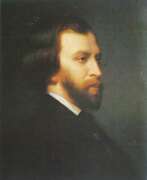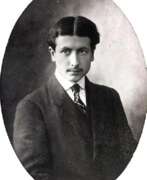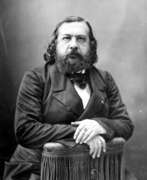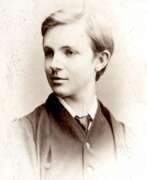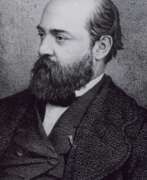Lyric poetry Romanticism
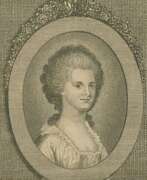

Ann Eliza Bleecker, née Schuyler, is an American poet and writer.
Ann from a young age surprised others with her poetic and literary talent. Married to lawyer John James Bleecker, she continued to write sentimental poems and so-called letters in which she enclosed her compositions. The family idyll was disrupted with the onset of the British offensive during the American Revolution. Ann and her husband had to flee, they experienced much grief and loss. All this greatly affected the character and creativity of Ann Bleecker.
In her most famous fiction narrative "The Story of Maria Kittle", which is addressed to her cousin, Ann describes the hardships of surviving captivity with the cruel Native Americans.
Ann Eliza Bleecker died at the age of 32, leaving behind manuscripts of poetry and prose that she never intended to publish. A few years later, her daughter, the poet Margaret Foger, published a significant portion of Bleeker's work, including twenty-three letters, thirty-six poems, and "The History of Maria Kittle," first in The New-York Magazine in 1790 and 1791, and then in a collection entitled "The Posthumous Works of Anne Eliza Bleecker" in 1793. "The History of Mary Kittle" was reprinted separately in 1797, a testament to the novel's popularity.
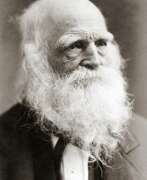

William Cullen Bryant is an American poet, journalist, and editor-in-chief of the New York Post.
He began his education at Williams College, then studied law and worked as a lawyer, but a very different fate awaited him. In 1825, he moved to New York City and became co-editor of the New York Review. In 1827 he became editor of the New York Evening Post, and in 1829 he became its editor-in-chief and co-owner.
Bryant remained in this position until his death, for 50 years. He made the Post a voice for free trade, workers' rights, free speech, and abolition of the death penalty, and he was a founding member of the Republican Party.
Bryant wrote poetry from his early youth and announced himself by publishing a book of Poems (1821). His main theme was nature, and his best-known poems are "Thanatopsis" and "To a Waterfowl." In later years he devoted much time to translations and was an active patron of art and literature.
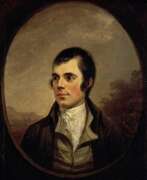

Robert Burns (Gaelic: Raibeart Burns or Rabbie Burns) was a Scottish poet, folklorist, and bard.
The hard farm life of his father significantly influenced Robert's outlook. Education of the novice poet received a sketchy, reread all English writers, knew Latin and French. In time, he became an opponent of the social order of his time and a satirist of all forms of religious and political thought that lead to inhumanity.
Burns' first book, entitled Poems, mostly in the Scottish dialect, was published in 1786. It was well received by the public, and the elated author traveled to Edinburgh, where he met James Johnson, a keen collector of Scottish songs. Together they produced a book, The Scottish Musical Museum. This and a similar book, George Thomson's Selected Collection of Original Scottish Songs for Voice (1793-1818), contain the bulk of Burns' songs.
Robert Burns was torn between his farming background and the much higher status of many of the intellectuals with whom he socialized and corresponded closely. Although he obtained a position in the excise office, this did little to satisfy the ambitions of the somewhat naive poet.
Having gained a reputation as a writer of poems and songs in Scottish and English, Burns went on to collect and adapt Scottish folk songs and created one of his major works, Tam of Shanter (1791), a narrative poem based on a folk legend. Even today Burns is honored as Scotland's national poet and is considered a pioneer of the Romantic movement in England.
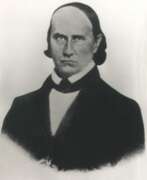

Thomas Holley Chivers was an American physician and poet of the first half of the 19th century.
Chivers earned a medical degree from Transylvania University in Lexington, Kentucky, but rarely practiced medicine. After receiving an inheritance, he was able to live freely and travel. In the early 1830s he traveled extensively throughout the western frontier and the North. He became fascinated with Transcendentalist philosophy as well as slave poetry. A number of Cheevers's poems and plays reflected his ideological views on American Indians and their plight, inspired in part by his interactions with the Cherokee during his frontier wanderings.
During his lifetime, Chivers published eleven volumes of poems, plays, and pamphlets. He also collaborated with the leading literary periodicals and newspapers of the antebellum era, notably the Georgia Citizen, and wrote a biography of Edgar Allan Poe, his friend and soulmate. Nevertheless, the eccentric writer never achieved the critical acclaim he craved all his life.
The friendship between Chivers and Edgar Allan Poe was based on a mutual fascination with metaphysical speculation, as well as on shared literary interests. However, the close cooperation of the two poets was accompanied by a sharp rivalry, in addition, each of them began to consider the artistic borrowings of the other plagiarized. By and large, Chivers is known only for his association with Edgar Poe.
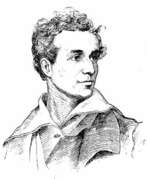

McDonald Clarke was an American outsider poet of the first half of the 19th century.
McDonald Clarke led an eccentric lifestyle and was nicknamed the Mad Poet of Broadway. He suffered periodic bouts of insanity, but was a regular on the New York poetry scene. Clarke was also known for sleeping in cemeteries and imitating Lord Byron. In his many poems, he covered topics ranging from social satire to sentimental romanticism.
Clarke was always virtually penniless and ended his life in a New York prison, where he was taken in another fit. The mad poet was immortalized by Walt Whitman, whom he greatly influenced as a mystical figure and outsider poet. The young Whitman was fascinated by both Clark's works and his eccentric life. Contemporaries describe Clarke as a mad child with aristocratic manners, meek and always happy, and all his oddities did no harm to those around him.
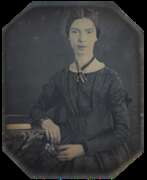

Emily Elizabeth Dickinson was a 19th-century American lyric poet.
Emily led a secluded and rather unusual lifestyle, preferring active correspondence instead of personal communication. In addition to many brilliant and witty letters to her family and friends, she wrote about two thousand poems during her lifetime, but only about ten were published during her lifetime.
Dickinson possessed an extraordinary brilliance of style and integrity of vision and, along with Walt Whitman, is today considered one of the two leading American poets of the nineteenth century. She easily ignored the usual rules of versification and even grammar, and in the intellectual content of her works showed exceptional courage and originality. It is known that the poetess was particularly impressed by the poetry of Ralph Waldo Emerson, and with Charles Wadsworth she corresponded.
Today, the work of Emily Dickinson is evaluated as a bright forerunner of modernism, it is widely studied in educational institutions in the United States and Europe.
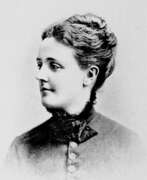

Sarah Orne Jewett, full name Theodora Sarah Orne Jewett, is an American writer and poet.
Sarah attended Berwick Academy, but did most of her education on her own. She signed her first short stories "Alice Eliot." Her many late sketches of the New England town of Deephaven, reminiscent of South Berwick, were published in The Atlantic Monthly and collected in her first book, Deephaven (1877).
She wrote three novels and several books for children, and several collections of her poems were also published. Jewett's best book, The Land of Pointed Firs (1896), like Deephaven, tells of the isolation and loneliness of a decaying port town and the unique humor of its inhabitants. Her works are reminiscent of the novels of Gustave Flaubert, whose work she admired.
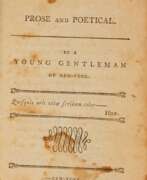

John Blair Linn is an American priest and poet.
Linn graduated from Columbia College and later became a priest. While in college, he published in magazines and newspapers, later writing a play and several collections of poetry and prose.
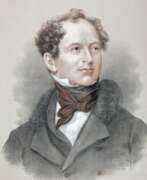

Thomas Moore was a British poet, songwriter and composer, a representative of Irish Romanticism.
Thomas graduated from Dublin University, from the age of 14 he collaborated with various Dublin journals. In 1800 he published his "Odes of Anacreon", and a year later - a collection of Poems by the late Thomas Little ("Poems by the late Thomas Little") and became widely known. Visiting the United States, Moore published a collection of poems, where he spoke about this country very sharply.
In 1812, Thomas Moore met Byron, became his close friend and wrote one of the best biographies of him, published in 1835. Moore's most famous works are "The Last Rose of Summer" and the collection "Irish Melodies" (1807-1834), which brought him a stable income for many years. In Russia, however, he is known primarily for the poem Those evening bells from the collection published in 1818. The poem was translated by Ivan Kozlov, and it turned into the famous and beloved song "Evening Bells".
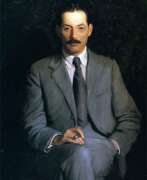

Edwin Arlington Robinson is an American poet, writer and playwright. He won the Pulitzer Prize three times.
Edwin did not finish his studies at Harvard, but in his youth he wrote a lot, experimenting with translations of Greek and Latin poets, sent his poems for publication in different editions, not always successfully. In 1904, Robinson's poems were seen by President Theodore Roosevelt and gave the poet his way.
Although much of Robinson's poetry deals with failed lives, some critics consider his work to be life-affirming. His Collected Poems (1922) won the first Pulitzer Prize ever awarded to poetry. In 1925, Robinson won a second Pulitzer Prize for his poem "The Man Who Died Twice," the story of a street musician whose only musical masterpiece is a lost after a night of debauchery. And in 1928, Robinson won the Pulitzer Prize again - for his long poem "Tristram," one of a series of poems based on the legends of King Arthur.
Robinson was also nominated four times for the Nobel Prize in Literature, and in 1927 he was elected a member of the American Academy of Arts and Letters.
Although Robinson was one of the most prolific American poets of the early 20th century, he is now remembered for a few short poems. The poet was dedicated to his art and led a solitary life. Edwin Robinson's works have been translated into many languages of the world, including Russian.


Susanna Rowson, née Haswell, was an American writer and poet, playwright, actress, and educator.
Susanna Haswell was the daughter of an officer in the Royal Navy. She published her first novel, Victoria, in 1786 and soon married businessman William Rowson. Susanna's greatest success was her first American bestseller, the novel Charlotte, A Tale of Truth (1791, in later editions under the title Charlotte Temple). This novel, a conventional sentimental story of seduction and remorse, was immensely popular and went through more than 200 editions.
In 1792 she became an actress and performed with her bankrupt husband in Scotland, as well as in Philadelphia, Baltimore, and Boston. In 1797, after retiring from the stage, Susanna opened the first "female academy" in Boston. Susanna Rowson also wrote many plays and musicals, and in doing so, helped to develop the performing arts in the United States. Later, she also edited the Boston Weekly Magazine, wrote geography and spelling textbooks, and moralizing manuals.
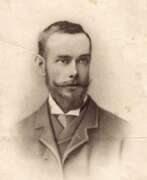

Francis Thompson was a British poet and literary critic.
Thompson received a Roman Catholic education at Ushaw Seminary College, also studying medicine in Manchester, but became addicted to opium. From 1885 he lived in poverty in London, where 1888 his first two poems were finally published. After that he published two more collections of poems. His unsettled and deprived life ended at the age of 47 from tuberculosis.
Thompson is now ranked among Britain's greatest Catholic poets. Francis Thompson's most famous poem is "The Heavenly Dog" (1893).
